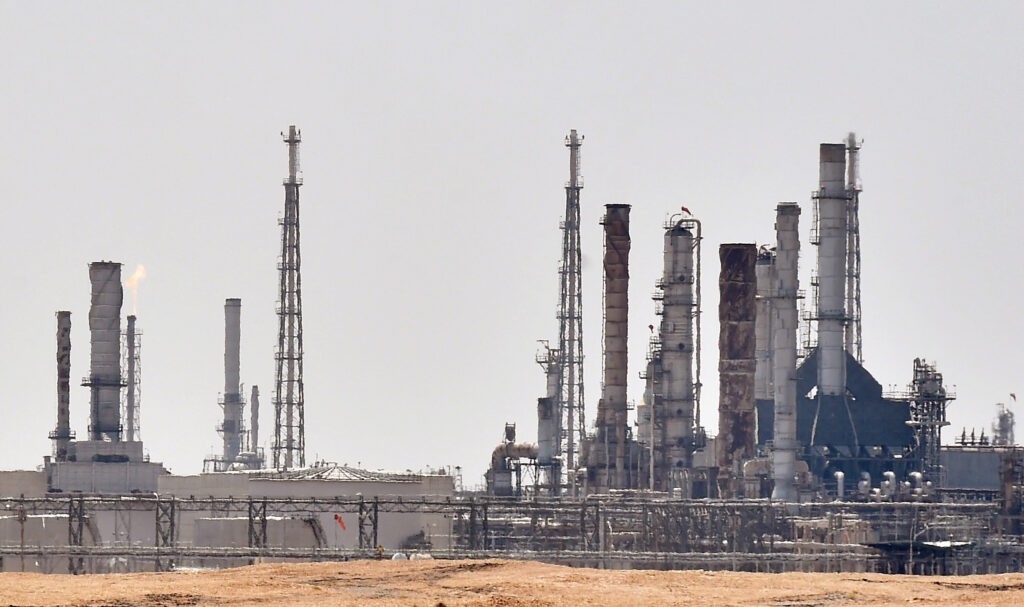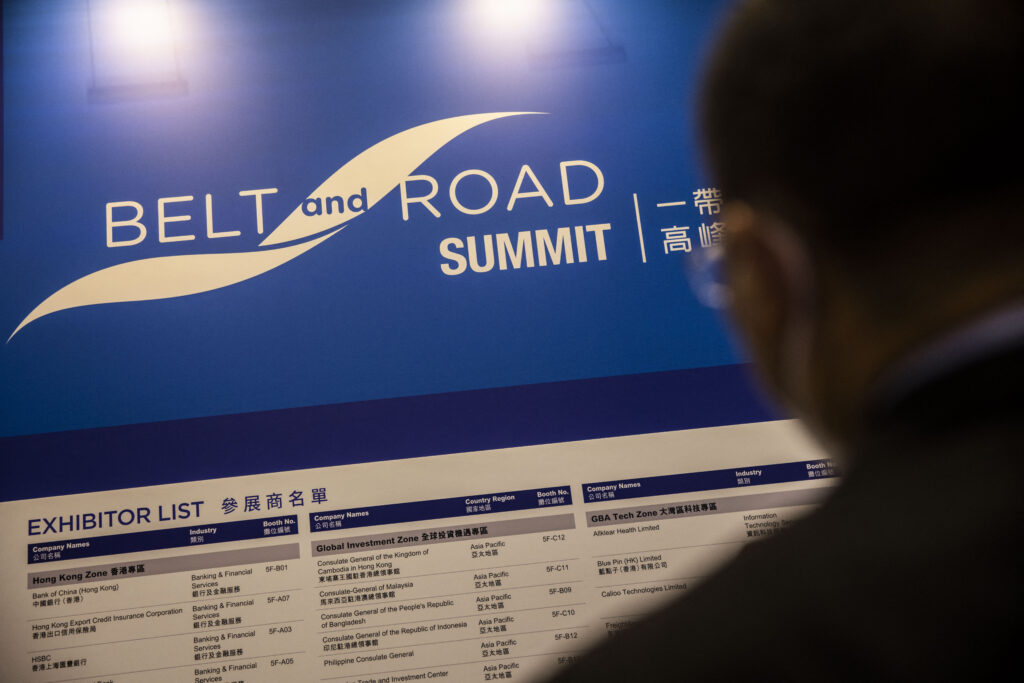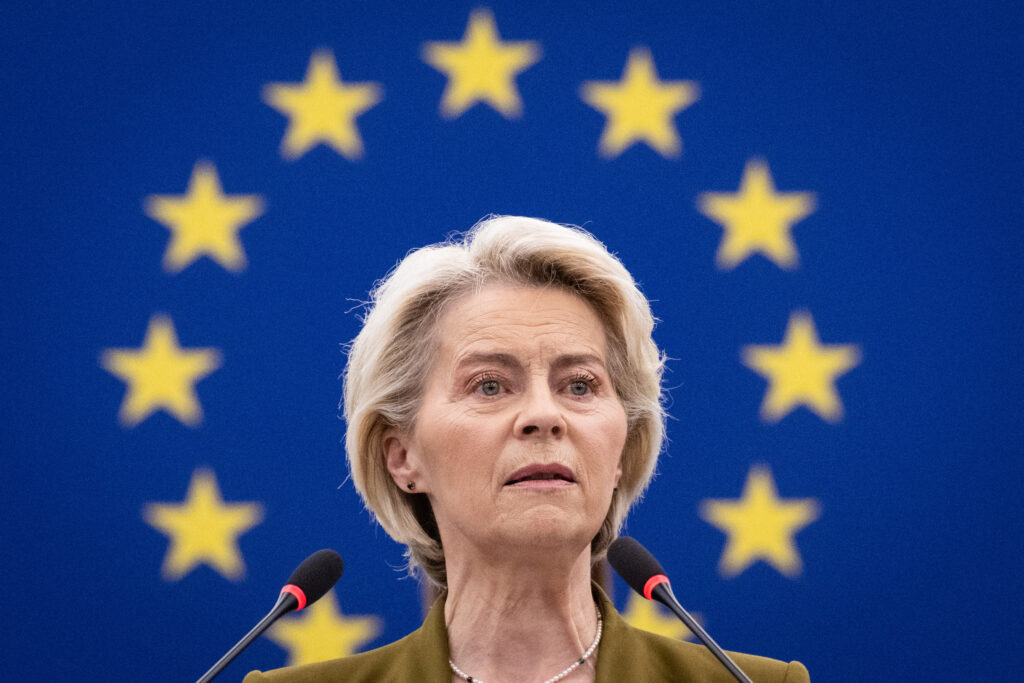
Series Introduction
COP 27 and Climate Action In The Middle East
The Middle East region, a large swathe of which comprises deserts and semi-arid zones, is a climate hotspot. It is warming almost two times faster than the global average. Intensive exploitation and use of fossil fuels, which lead to increased greenhouse gas emissions, are part of the reason for the warming. Heatwaves as well as extreme weather events such as droughts, dust storms and torrential rains will have disruptive health and socioeconomic impacts.
The 27th Conference of the Parties (COP) to the United Nations Framework Convention on Climate Change (UNFCCC), set to place in Sharm el-Sheikh, Egypt, from 6 November 2022 is a timely opportunity to examine the progress of climate action in the Middle East. This series of Insights looks at the key climate threats faced by countries in the region and the mitigation and adaptation measures pledged or implemented so far, including financing challenges. It hopes to identify the implementation gaps in these measures and offer possible solutions.
CLICK HERE FOR THE PDF
*Jim Krane
Saudi Arabia’s “net zero” by 2060 goal was a bold step for this petrostate, but one replete with serious hazards. On the one hand, the kingdom’s embrace of global decarbonisation could undermine the financial lifeblood that has supported family-based rule since 1938. On the other hand, Saudi Arabia finds itself with competitive advantages that provide opportunities for lucrative businesses in low-carbon fuels and carbon services. This paper examines the Saudi asset base and finds a compelling case for decarbonisation.
At nearly 600 million tonnes, Saudi Arabia’s domestic carbon dioxide emissions in 2020 ranked ninth in the world, just behind South Korea’s and ahead of Canada’s.[1] On a per capita basis, Saudi emissions were nearly quadruple the world average.
But in 2021 the kingdom declared that it would reach “net zero” emissions of greenhouse gases by 2060. The kingdom’s national oil company, Saudi Aramco, announced it would decarbonise its own operations by 2050.[2]
How might the kingdom shift from its current state of emissions intensity to one of carbon neutrality?
This paper, excerpted from a larger political economy examination of the Saudi net-zero strategy,[3] lays out a potential path for the decarbonisation process. While the existence of substantial barriers suggests a difficult process, Saudi Arabia holds major advantages in decarbonisation. These include generous solar radiation, unused land, geological storage, clustered carbon emissions, and useful experience with engineering and construction projects in related sectors.
Credibility of Commitment
The net-zero target represents a new policy direction for Saudi Arabia, the world’s largest exporter of petroleum. Oil revenues contribute roughly a quarter of the Saudi GDP and 80% of the national budget. In 2022, earnings of Saudi Aramco approached US$1 billion per day.[4] Overwhelming financial dependence upon oil has led to long-running Saudi obstructionism in global climate negotiations.[5]
Even so, this paper argues that Saudi Arabia seeks to shape global decarbonisation in ways that skew towards its competitive advantages. For one, Saudi policymakers predict that human needs in transport and plastics will support oil production over the long term, albeit at lower levels than today.[6] Second, the kingdom’s emissions from oil production are already among the world’s lowest and Saudi Aramco aims to reduce them further.[7] And, third, Saudi oil should gain a larger share of the future global market due to cost and emissions advantages.
The kingdom appears to be counting on oil exports to fund its net-zero commitment, and thus seeks to leverage greenhouse gas reduction techniques and offsets that leave oil demand intact. [8] These ambitions are described in the kingdom as a “circular carbon economy” approach.[9] Some scholars have expressed doubts about the “circularity” of a strategy that involves combusting — and depleting — fossil fuels.[10] Further, some of the approaches towards this goal, such as zero-emissions hydrogen generation and carbon capture and storage, remained unproven at scale.
At the time of writing, solutions did not exist that would enable large-scale oil combustion simultaneously with effective net-zero decarbonisation. Any pursuit of net-zero goals that avoids replacing combusted oil, whether inside the kingdom or globally, must therefore call into question the credibility of such a commitment. Despite these caveats, this paper seeks to envision a Saudi path towards net zero.
The Saudi Emissions Footprint
Saudi Arabia’s emissions are split between three major sectors: power generation accounts for 40%; another 40% comes from industry, which bundles together refining, petrochemicals, and the upstream oil and gas sector; transport adds a further 19%.[11] (Figure 1)
Saudi Aramco is also a major source of emissions occurring outside its borders. The oil and gas produced and mainly exported by the Saudi oil company contributed nearly 5% of global carbon emissions in 2018, the largest share of any single commercial entity in the world (Figure 2).
Steps To Net Zero In Saudi Arabia
The carbon intensity of the Saudi economy presents policymakers with a number of inexpensive and effective ways to reduce emissions while improving economic competitiveness. Chief among these is a reduction in oil use.In 2021, the kingdom consumed an average of 3.6 million barrels per day (b/d) of oil and gas liquids.[12] Almost a third of that was burnt to produce electricity, roughly 430,000 b/d of crude oil and 600,000 b/d of refined products.[13] Expunging oil from the domestic power sector would improve the Saudi carbon footprint, while providing attractive economic benefits.
How might a plan to reach net zero in the kingdom start? One might envision steps that begin with increases in energy prices and subsequent improvements in efficiency, followed by steps to decarbonise the power sector and transport.[14] Reforming the industrial sector and oil and gas would require a combination of alternative fuels, carbon capture and storage (CCS), and elimination of methane emissions.
Under the net-zero plan, subsidised energy prices for the domestic market, serving to encourage fossil fuel consumption and emissions, should come under increased pressure for reform. The net-zero goal aligns with already strong internal government pressure for further increases in prices and energy efficiency in the kingdom.
Major cuts to subsidies in 2016 and 2018 and the resulting price increases succeeded in dampening demand for transport fuels and electricity in the kingdom.[15] Domestic demand for oil appears to have peaked in 2016 and dropped by almost 10%, or 367,000 b/d, through the end of 2021.[16] Consumption of refined products was also trending down, as Figure 3 demonstrates.
But Saudi energy prices remain well below global averages. In August 2022, gasoline was cheaper in the kingdom than in all but 18 other countries, averaging US$0.62/litre (US$2.35/gallon). Diesel, at US$0.17/litre (US$0.63/gallon), was cheaper than everywhere else except Libya, Venezuela and Iran. Residential electricity prices, starting under U$$0.05/kilowatt-hour, were a third of the US average and just 15% of those in Britain.[17]
The Saudi net-zero goal bolsters the effectiveness of ongoing efficiency programmes by incentivising further price increases while providing political cover to ruling elites for unpopular reforms. The World Bank stated in 2022 that the energy efficiency improvements flowing from subsidy reforms are “the single most important element of moving to net-zero emissions.”[18]
Power Sector Decarbonisation
An earnest Saudi effort to reach net zero would also prompt the transformation of the domestic power sector. Decarbonising electricity generation would be accompanied by shifting as much energy consumption as possible towards electricity, and away from direct fossil fuel combustion. As the electricity sector moves towards cleaner technologies, overall emissions should decline. As mentioned, 40% of the kingdom’s emissions currently flow from power generation, split almost entirely between natural gas (61%) and oil-based fuels, including crude oil and heavy fuel oil. (Figure 4) Most power is consumed in cooling buildings.[19]
The largest share of decarbonisation could be achieved via an enormous expansion of renewable power along with some initial switching from oil- to gas-fired generation. Solar power development is under way. Contracts for nearly 5GW of renewables capacity development had been awarded as of spring 2022, and another 15 GW were to be awarded by the end of 2023. These projects represent the initial stages of a pledged 58.7 GW of renewables capacity announced by Saudi energy minister Prince Abdulaziz bin Salman, as part of the goal for renewables to generate half the national power supply by 2030, with natural gas covering the other half[20] (Figure 5).
Reaching the 50% renewable energy goal in just over seven years poses a major challenge. In 2021, just 0.2% of Saudi electricity was generated from renewable sources.[21] Investments well beyond those cited above will be required.
Saudi Arabia, like its neighbours from the Gulf Cooperation Council, enjoys the world’s lowest cost solar generation, due to copious solar radiation and large amounts of vacant land close to load centres. Recent power purchase contracts with government-owned utilities have breached the US$0.02 per kilowatt-hour threshold.[22]
Wind generation appears less competitive, except in western Saudi Arabia, where there are consistent wind resources. Overall wind potential is low, with speeds averaging just over 5 metres per second, well below the global average for windy regions of 11m/s.[23]
Beyond just building renewables to replace oil-fired generation, the kingdom will eventually need to cope with emissions of its remaining gas-fired power generation. Public comments from Prince Abdulaziz bin Salman suggested in 2021 that the kingdom would leverage CCS for this purpose.[24] Over the longer term, nuclear power could provide a further source of clean power.[25]
Besides dealing with emissions, Saudi Arabia will also need to generate more electricity overall. That is because power demand, already growing at an average rate of nearly 5% per year over the last decade,[26] will need to expand to cover new sectors being electrified. Success in subsidy reform and efficiency improvements would reduce the rate of required expansion. Coping with intermittency will need backup generation, storage, and demand-side tools such as load-shedding.
Transport
The second most obvious candidate for decarbonisation is the transport sector, responsible for 19% of the kingdom’s CO2 in 2020. Full decarbonisation of both power and transport sectors would eliminate roughly 60% of current emissions.
Light-duty vehicles, which make up just over half of the kingdom’s transport energy demand, represent the initial market for electrification. The government’s Saudi Green Initiative set a goal of 30% vehicle electrification in Riyadh by 2030.[27]
The kingdom and some of its neighbours had already embarked on electric vehicle strategies, including attracting manufacturers to build vehicles in the region. Saudi Arabia’s venture with Lucid Motors was expected to assemble 155,000 cars a year and sell 100,000 electric vehicles to the Saudi government, while Saudi firm Electromin announced it would install vehicle charging points.[28]
Decarbonising the transport sector is more difficult than eliminating emissions from the electric power sector. While personal and fleet vehicles work well with electrification, others — aircraft and trucks — do not. Efficiency measures[29] can reduce emissions from long-distance freight transport, aircraft and shipping, but total elimination may require offsets.
Research suggests some heavy transport modes may be more efficiently converted to hybrid (bio)diesel or hybrid gasoline systems, or perhaps hydrogen fuel cells or even compressed (bio)gas. Shifting between transport modes — for example, moving diesel truck traffic to electrified rail — is another option.[30] Air carriers are already experimenting with biofuels, while hydrogen (ammonia) and methanol (mainly from biomass) are among potential sources in shipping.[31]
Industry
Industrial emissions in Saudi Arabia — including the oil and gas sector itself — comprise the final 40% of the kingdom’s emissions. Decarbonising industry is well known as a challenging proposition. However, Saudi Arabia has declared its intention to develop two promising industrial decarbonisation technologies, CCS and hydrogen.[32]
Eliminating carbon emissions from the enormous Saudi petrochemical sector poses a major challenge. The process of cracking naphtha or ethane into ethylene now requires combustion of fossil fuels, mainly natural gas, to produce heat. Producing a single kilogram of ethylene creates about 2 kg of carbon dioxide emissions, along with other pollutants.[33]
Options for decarbonising petrochemical plants include using clean electricity or hydrogen as heat sources, or capturing and sequestering emissions using CCS. Aramco is also experimenting with direct crude-to-chemicals conversion, which would streamline energy-intensive processes.
Saudi Arabia has geographic advantages that could assist in industrial decarbonisation. These include regional clustering of Saudi Arabia’s industrial sector along with suitable geology. Most Saudi industry is concentrated in three regions, which reduces infrastructure required for capturing, gathering and storing emissions underground. Industrial clusters can become hubs for stripping carbon from flue gases, along with CO2 pipelines for transport to storage sites.
Carbon Capture and Storage
Saudi Arabia has long touted the strategic advantages for oil exporting states of investing in CCS. This is due to the technology’s attributes as both a source of fossil fuel demand and a method for abating its emissions. Both could help preserve fossil fuels in a climate-compatible energy mix. Capturing and sequestering carbon is also a key component of Aramco’s blue hydrogen and blue ammonia ventures.
Two capture sites already exist in the kingdom. One operates at a petrochemical plant and the other at a natural gas processing facility.[34] Saudi Arabia’s 2021 UN climate pledge details plans to transform the emissions-rich industrial cities of Jubail and Yanbu into future centres of carbon capture. Aramco plans to capture 11 million tonnes per year by 2035 en route to achieving the promised elimination or offsetting of its Scope 1 (direct) and Scope 2 (indirect and supply chain) emissions.
Aramco’s 2021 sustainability report estimated Scope 1 emissions at 52.3mn tonnes of CO₂equivalent, and Scope 2 emissions at 15.5mn tonnes, making up a combined 68mn tonnes (Figure 6).[35] Without CCS, Aramco’s emissions would rise, given plans to increase oil production capacity to 13 million b/d, alongside expansions in refining and gas production.
Saudi geology and industrial expertise is ideally suited for carbon capture. The kingdom is a centre of pipeline and engineering project development, while, as mentioned earlier, industrial clusters provide concentrated CO2 streams that make capture simpler and cheaper.
The kingdom is also endowed with geological pore space ideally suited for storing carbon. Depleting oilfields are found throughout the Eastern Province, with others just southeast of Riyadh. The eastern half of the Arabian peninsula contains multiple stacked aquifers with suitable structures for long-term CO2 storage, while aquifers along the peninsula’s western edge are also likely to provide excellent seals to sequester CO2. Smaller underground formations are ideal for CCS using mineral alteration technologies that convert gaseous CO2 into solid mineral form for permanent sequestration.[36]
Decarbonised Fuels (Hydrogen and Ammonia)
Hydrogen is another favoured route for oil companies seeking to preserve the profitable “fuel supply chain” model of energy provision. Exports of hydrogen or derivatives like ammonia and methanol are akin to the oil and gas trade, which, for petrostates, is preferable to electrification via renewables that require no fuels.
Saudi Arabia is among the cheapest places in the world to develop hydrogen due to large natural gas reserves, copious solar radiation, ample geological storage, and unused surface land near population centres.[37]
There are two types of hydrogen that are of interest: “blue” hydrogen, which splits natural gas into hydrogen and a sequesterable carbon stream; and “green” hydrogen, which uses renewable power to electrolyse water into hydrogen and oxygen. Hydrogen can be burnt directly as a fuel in industrial boilers and power plants (and even vehicles) or used in fuel cells to power electric vehicles. Hydrogen gas can also be rendered more transportable if converted to liquid ammonia with the addition of nitrogen and “cracked” back into hydrogen at the destination.
Zero-carbon hydrogen could be the industrial fuel for a decarbonised Saudi Arabia, as well as a new export commodity for industrial or transportation use. Aramco has already announced its intent to produce blue hydrogen and blue ammonia (up to 11 tonnes/year by 2030) from domestic natural gas.[38]
Conclusion
The global transition to clean energy poses enormous risks for Saudi Arabia, due to the potential decline of its petroleum export sector and the oil rents that sustain the monarchy. The kingdom’s net-zero pledge is a key component of its strategy for coping with the transition. By decarbonising the domestic economy and demonstrating the viability of carbon capture and clean fuels derived from oil and gas, the kingdom showcases an alternative route to net zero than the more familiar renewables-electrification path. Carbon reductions provide added benefits in the form of carbon-competitive exports which could be exempt from future border tariffs in importing countries. Finally, the kingdom also enjoys strong competitive advantages that make unwinding its ultra-high carbon emissions easier than in other settings.
* Dr Jim Krane is the Wallace S. Wilson Fellow for Energy Studies at Rice University’s Baker Institute for Public Policy. He specialises in energy geopolitics, with a focus on oil-exporting countries and the challenges they face from energy subsidies, internal demand and climate change. He is the author of the 2009 book City of Gold: Dubai and the Dream of Capitalism and the 2019 book Energy Kingdoms: Oil and Political Survival in the Persian Gulf.
Image: An Aramco oil facility near the al-Kharj area, just south of Riyadh, Saudi Arabia, 15 September 2019. Fayez Nureldine/AFP
End Notes
[1] Emissions Database for Global Atmospheric Research (EDGAR), “CO2 Emissions of All World Countries”, European Commission, 2022, https://edgar.jrc.ec.europa.eu/report_2022.
[2] Saudi Aramco, “Aramco Expands Climate Goals, Stating Ambition to Reach Operational Net-Zero Emissions by 2050”, Press Release, 23 October 2021), https://www.aramco.com/en/news-media/news/2021/ambition-to-reach-operational-net-zero-emissions-by-2050.
[3] Jim Krane, “Net Zero Saudi Arabia: How Green Can the Oil Kingdom Get?” Forthcoming Working Paper, Baker Institute for Public Policy, Rice University.
[4] Saudi Aramco, “Aramco Announces Record Second Quarter and Half-year 2022 Results”, Press Release, 14 August 2022, https://www.aramco.com/en/news-media/news/2022/aramco-announces-half-year-2022-results.
[5] Morten Kaldhussæter Flisnes, “Where You Stand Depends on What You Sell — Saudi Arabia’s Obstructionism in the UNFCCC 2012–2018,” CICERO Report, 2019; Joanna Depledge, “Striving for No: Saudi Arabia in the Climate Change Regime”, Global Environmental Politics 8, no. 4 (2008): 9–35; Jim Krane, “Climate Strategy for Producer Countries: The Case of Saudi Arabia”, Working Paper, Baker Institute for Public Policy, Rice University, 2018, https://scholarship.rice.edu/bitstream/handle/1911/102798/ces-krane-climate-strategy-082818.pdf?sequence=1.
[6] Emma Newburger, “Saudi Aramco CEO Warns of social Unrest if New Investment in Fossil Fuels Ends Too Quickly”, CNBC, 6 December 2021, https://www.cnbc.com/2021/12/06/saudi-aramco-ceo-warns-of-unrest-if-fossil-fuel-investment-cut-too-fast.html
[7] Garvin A Heath et al., “Global Carbon Intensity of Crude Oil Production”, Science 361, no. NREL/JA-6A20-70554 (2018).
[8] Government of Saudi Arabia, “Kingdom of Saudi Arabia —- Updated First Nationally Determined Contribution”, UN Climate Pledge, UNFramework Convention on Climate Change (UNFCCC), 2021,https://unfccc.int/NDCREG.
[9] Aisha Al-Sarihi, “Factoring Climate Action into Saudi Arabia’s Economic Diversification and Stimulus Measures”, in Governance and Domestic Policymaking in Saudi Arabia: Transforming Society, Economics, Politics and Culture, eds. Mark C. Thompson and William C. Quilliam (IB Tauris, 2022), p. 225; King Abdullah Petroleum Studies and Research Center (KAPSARC), “Guide to the Circular Carbon Economy”, Website of Circular Carbon Economy (CCE), Kingdom of Saudi Arabia, August 2020, https://www.cceguide.org/guide/.
[10] Patrick Schröder, Sian Bradley, and Glada Lahn, “G20 Endorses a Circular Carbon Economy: But Do We Need It?,” expert comment (London: Chatham House, November 27, 2020), https://www.chathamhouse.org/2020/11/g20-endorses-circular-carbon-economy-do-we-need-it.
[11] EDGAR, “CO2 Emissions of All World Countries”.
[12] BP, “BP Statistical Review of World Energy 2022”, June 2022, https://www.bp.com/en/global/corporate/energy-economics/statistical-review-of-world-energy.html.
[13] Power sector consumption estimates from “Saudi May 2022 Key Oil Data”, MEES 65, no. 29 (22 July 2022).
[14] John Deutch, “Is Net Zero Carbon 2050 Possible?” Joule 4, no. 11 (18 November 2020): 2237–40, https://doi.org/10.1016/j.joule.2020.09.002.
[15] Jim Krane, Energy Kingdoms: Oil and Political Survival in the Persian Gulf, Center on Global Energy Policy Series (Columbia University Press, 2019). Anwar Gasim and Walid Matar, “Revisiting Energy Subsidy Calculations: A Focus on Saudi Arabia”, The Energy Journal 44, no. 1 (2023); Mohammad Aldubyan and Anwar Gasim, “Energy Price Reform in Saudi Arabia: Modeling the Economic and Environmental Impacts and Understanding the Demand Response,” Energy Policy 148 (2021): 111941.
[16] BP, “BP Statistical Review of World Energy 2021”, July 2021, https://www.bp.com/content/dam/bp/business-sites/en/global/corporate/xlsx/energy-economics/statistical-review/bp-stats-review-2021-all-data.xlsx.
[17] Data from GlobalPetrolPrices.com: Gasoline prices, 22 August 2022, https://www.globalpetrolprices.com/gasoline_prices; Diesel prices, 22 August 2022, https://www.globalpetrolprices.com/diesel_prices; Electricity prices, December 2021, https://www.globalpetrolprices.com/electricity_prices.
[18] World Bank, “Gulf Economic Update: Achieving Climate Change Pledges”, World Bank, Spring 2022, p. 25.
[19] World Bank, “Gulf Economic Update: Achieving Climate Change Pledges”.
[20] See “Saudi Arabia Awards 1GW Of Solar Projects”, MEES 65, no. 10 (11 March 2022), http://archives.mees.com/issues/1945/articles/60661; also: Hebshi Alshammari, “Saudi Arabia Aims to Generate 50% of Power from Renewables by 2030”, Arab News, 20 January 2021; https://arab.news/8yk8z
[21] BP, “BP Statistical Review of World Energy 2021”.
[22] Informa Energy & Utilities, “Saudi Arabia Achieves Two New World Record Solar Tariffs”, 9 April 2021, https://energy-utilities.com/saudi-arabia-achieves-two-new-world-record-solar-news111675.html
[23] Saudi Arabia, Global Wind Atlas (website), n.d., accessed 14 June 2022, https://globalwindatlas.info/area/Saudi%20Arabia.
[24] Akshat Rathi, “How Saudi Arabia Is Planning to Reach Net Zero by 2060”, Bloomberg, 23 October 2021, https://www.bloomberg.com/news/articles/2021-10-23/how-saudi-arabia-is-planning-to-reach-net-zero-by-2060?sref=Q77DYrNe
[25] Noura Mansouri, “The Saudi Nuclear Energy Project”, KAPSARC, 2020, https://www.kapsarc.org/research/publications/the-saudi-nuclear-energy-project/.
[26] BP, “BP Statistical Review of World Energy 2021”
[27] Shatha AlMasoudi, “30% Vehicles in Riyadh Will Be Powered by Electricity by 2030, Says Al-Rasheed”, Arab News, Oct. 24, 2021, https://www.arabnews.com/node/1953596/business-economy
[28] Alkesh Sharma, “PIF-backed EV Maker Lucid to Produce 150,000 cars a Year at Its Saudi factory”, The National, 18 May 2022, https://www.thenationalnews.com/business/economy/2022/05/18/pif-backed-ev-maker-lucid-to-produce-150000-cars-a-year-at-its-saudi-factory
[29] The 2021 Saudi nationally determined contribution (NDC) suggests phasing out inefficient used light-duty vehicles and implementing aerodynamic regulation for heavy-duty vehicles.
[30] Magdala Arioli, Lew Fulton, and Oliver Lah, “Transportation Strategies for a 1.5°C World: A Comparison of Four Countries”, Transportation Research Part D: Transport and Environment 87 (1 October 2020): 102526, https://doi.org/10.1016/j.trd.2020.102526.
[31] Most methanol is made from natural gas via steam reformation. Low carbon methanol can also be made from biomass such as crop and forestry residue. Maersk, the world’s largest shipping company, has 12 methanol-fueled container ships on order and intends to source more than 700,000 tonnes of biomass methanol by 2025. See Maersk, “A.P. Moller-Maersk Engages in Strategic Partnerships across the Globe to Scale Green Methanol Production by 2025”, Press Release, 10 March 2022, https://www.maersk.com/news/articles/2022/03/10/maersk-engages-in-strategic-partnerships-to-scale-green-methanol-production
[32] “Saudi Arabia Urges Colorblind Approach to Hydrogen”, MEES, 13 May 12022. “Petro Rabigh Signs Up To CCUS”, MEES, 8 April 022.
[33] Sanjeev Kapur, “The Energy Transition and Decarbonization in the Ethylene Industry”, Apex PetroConsultants, 30 March 2021, https://www.apexpetroconsultants.com/blog/energy-transition-decarbonization-in-ethylene-industry
[34] Anthony Wright, “Challenges and Opportunities for CCS in Saudi Arabia”, Natural Gas World, 8 September 2021, https://www.gasworld.com/challenges-and-opportunities-for-ccs-in-saudi-arabia/2021674.article
[35] Saudi Aramco, “Saudi Aramco Sustainability Report 2021: Energy Security for a Sustainable World”, 2022. p. 32 and 46. See also “Saudi Arabia Sets Out Its Stall for Net-Zero 2060”, MEES, 29 October 2021, http://archives.mees.com/issues/1927/articles/60204
[36] Vahrenkamp, Volker, Abdulkader Afif, Alexandros Tasianas, and Hussein Hoteit, “The Geological Potential of the Arabian Plate for CCS and CCUS — An Overview” (Proceedings of the 15th Greenhouse Gas Control Technologies Conference, 15-18 March 2021), 8 April 2021, available at https://papers.ssrn.com/sol3/papers.cfm?abstract_id=3822139
[37] Leigh Collins, “Green Hydrogen now Cheaper than Blue in Middle East, but still Way More Expensive in Europe”, RECHARGE (magazine), 24 February 2022, https://www.rechargenews.com/energy-transition/green-hydrogen-now-cheaper-than-blue-in-middle-east-but-still-way-more-expensive-in-europe/2-1-1173423
[38] Saudi Aramco, “Saudi Aramco Sustainability Report 2021”, p. 40–41




